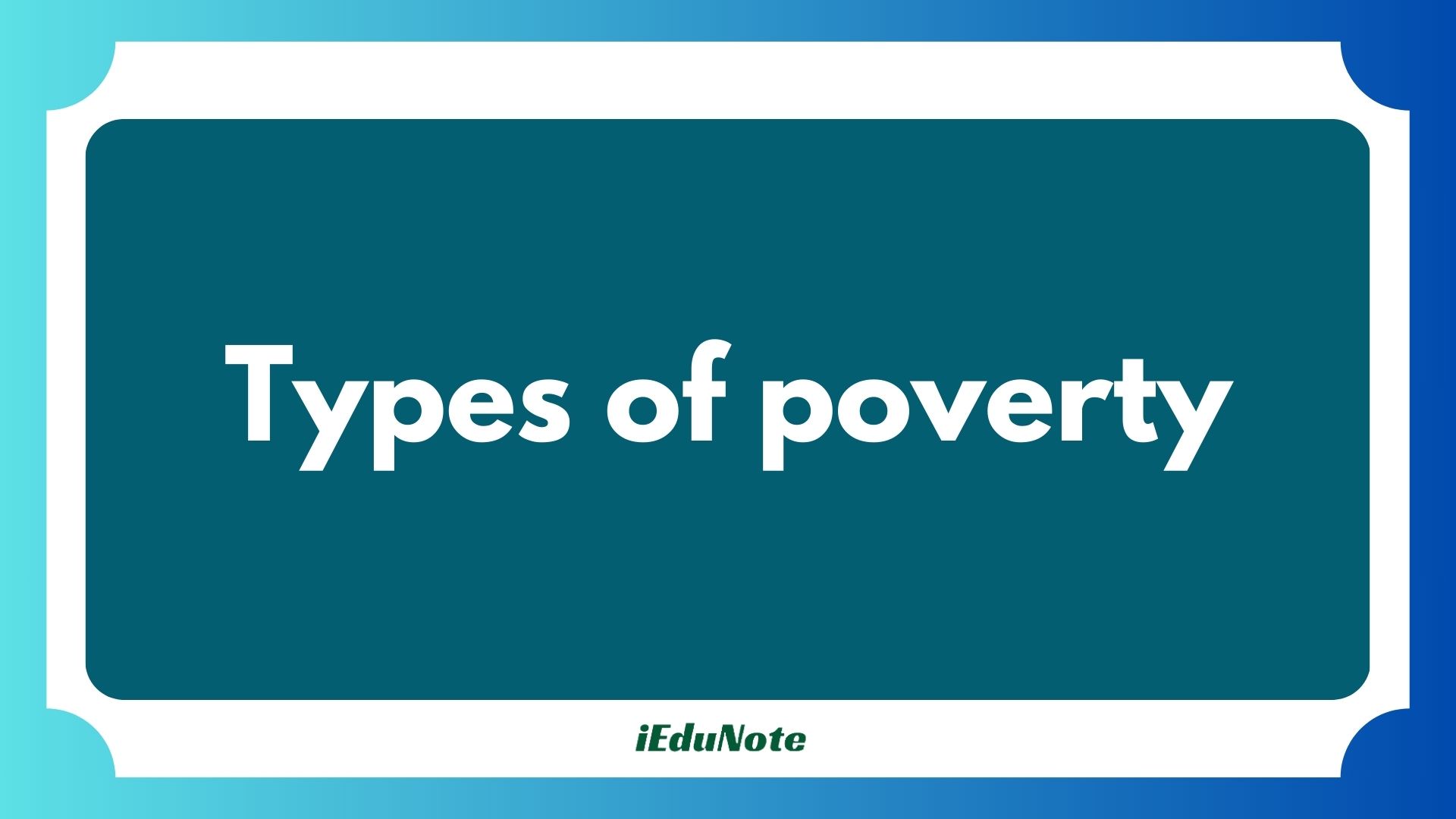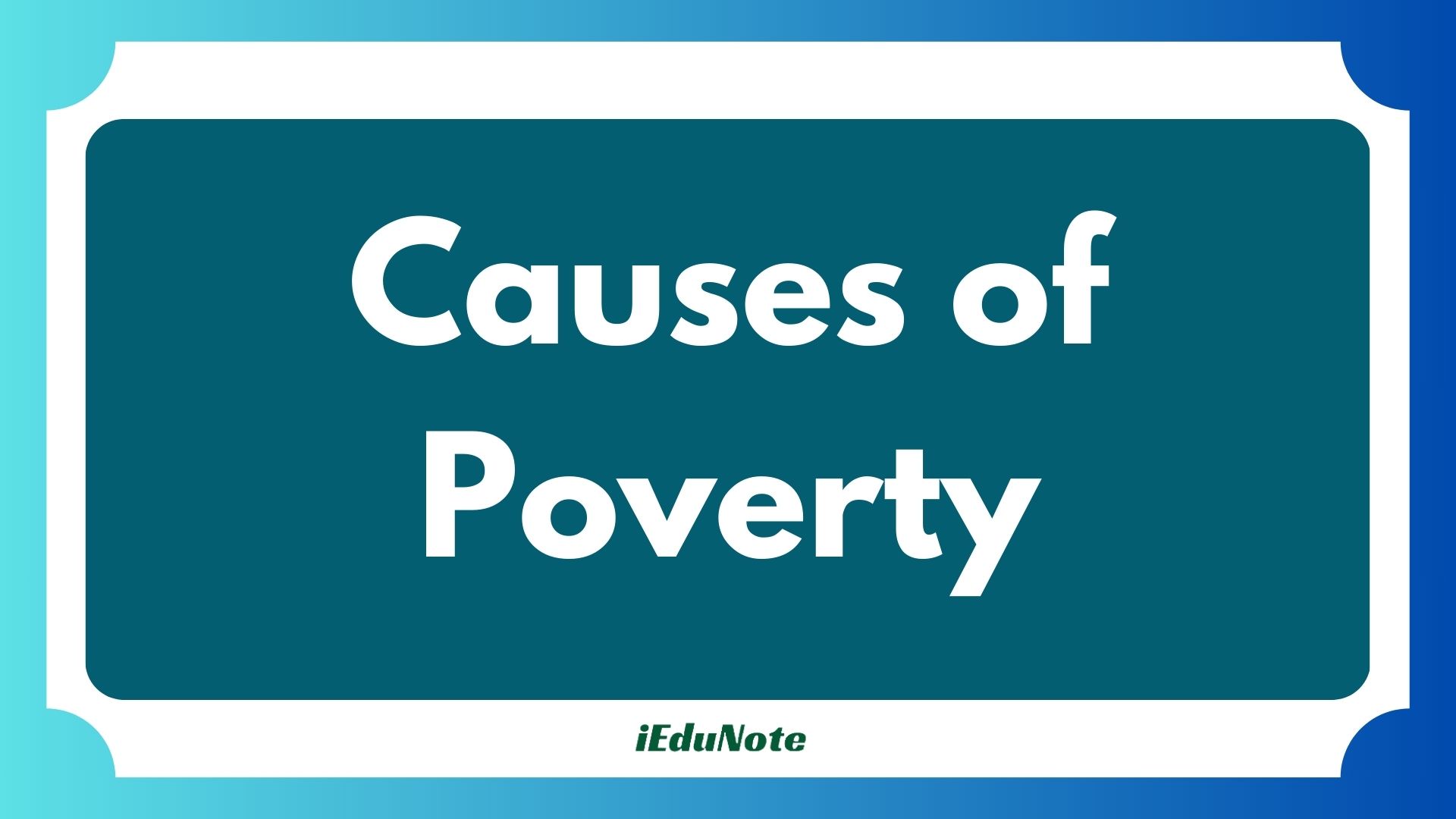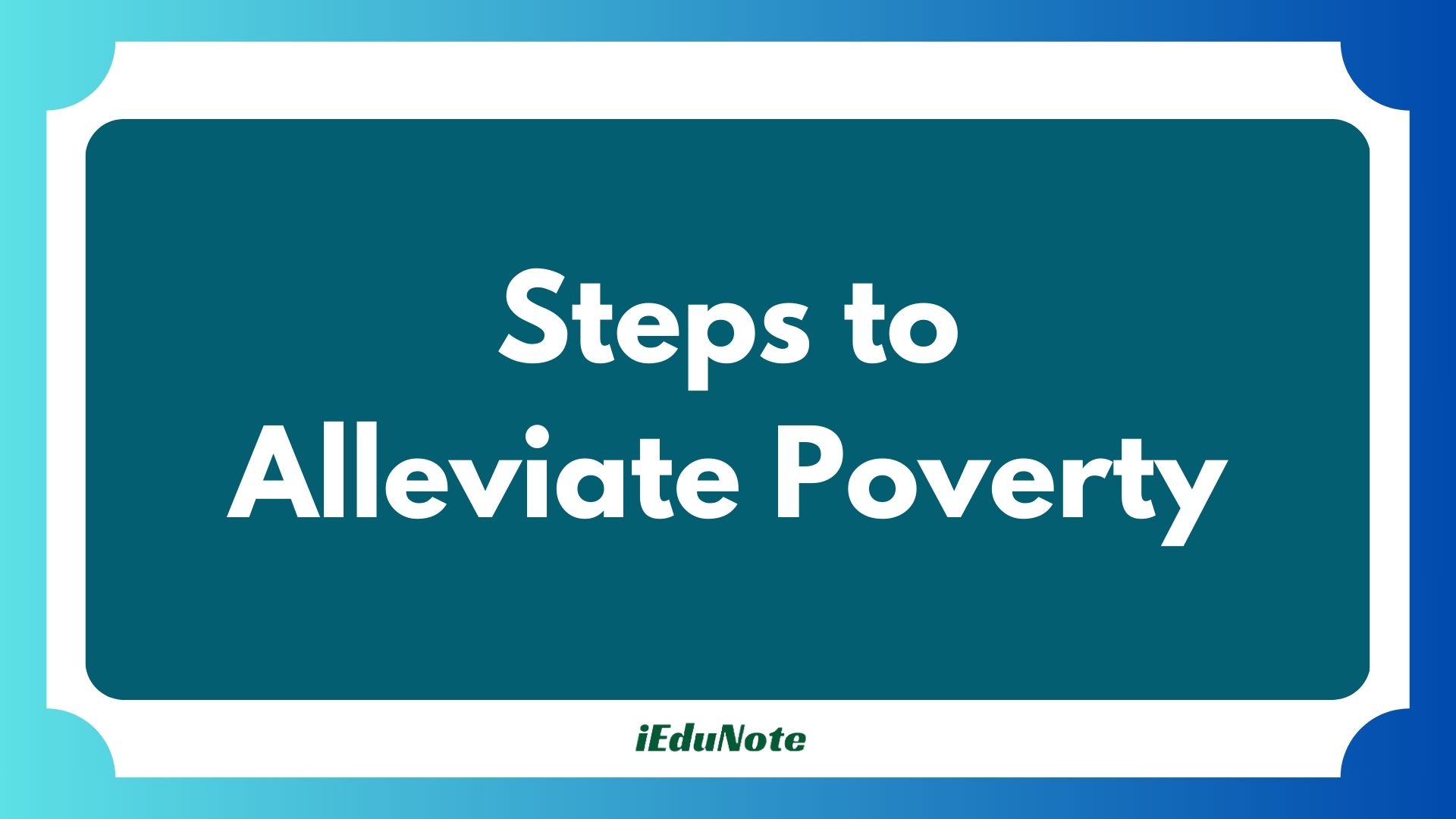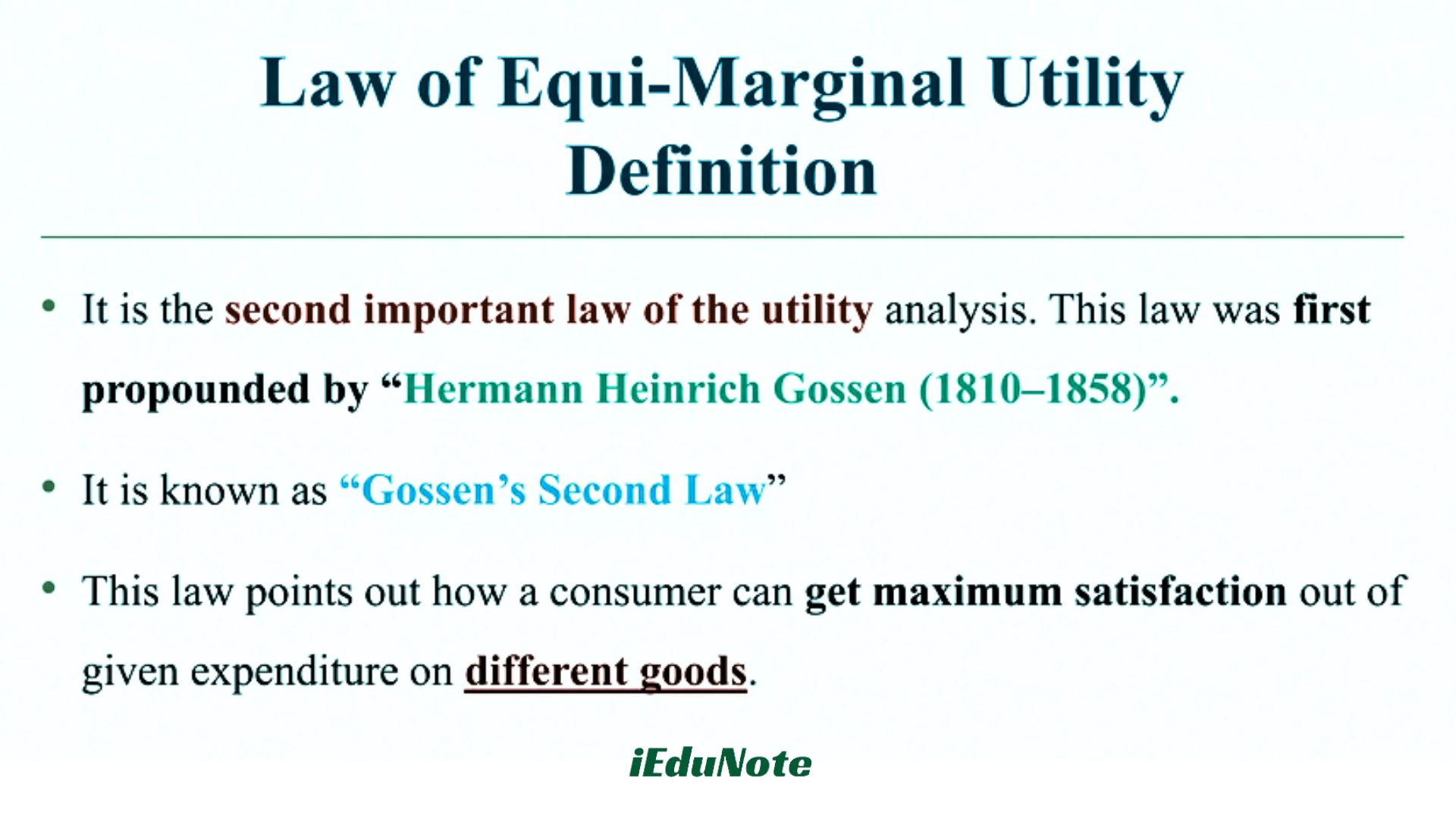Poverty is defined as the lack of the minimum food and shelter necessary for maintaining life. Generally, poverty is measured in terms of per capita income. Per capita, GNP figures are often criticized as being a poor measure of poverty because of their inability to account for various types of household-level informal economic activities.
More specifically, this condition is known as absolute poverty.
Today it is estimated that more than 35 million Americans – approximately 14 percent of the population live in poverty.
Of course, like all other social science statistics, these are not without controversy. Other estimates of poverty in the United States range from 10 percent to 21 percent, depending on one’s political leanings. This is why many sociologists prefer a relative, rather than an absolute, definition of poverty.
According to the World Bank Organization – The most commonly used way to measure poverty is based on income. A person is considered poor if his or her income level falls below some minimum level necessary to meet basic needs.
This minimum level is usually called the ‘poverty line’. – What is necessary to satisfy basic needs varies across time and societies. Therefore, poverty lines vary in time and place, and each country uses lines which are appropriate to its level of development, societal norms, and values.
Types of poverty

Absolute poverty/Extreme poverty
Absolute poverty refers to a condition where a person does not have the minimum account of income needed to meet the minimum requirements for one or more basic living needs over an extended period of time.
Extreme poverty, or absolute poverty, was originally defined by the United Nations in 1995 as “a condition characterized by severe deprivation of basic human needs, including food, safe drinking water, sanitation facilities, health, shelter, education and information.
Relative poverty
According to the definition of relative poverty, the poor are those who lack what is needed by most Americans to live decently because they earn less than half of the nation’s median income. By this standard, around 20 percent of Americans live in poverty, and this has been the case for at least the past 40 years.
Of these 20 percent, 60 percent are from the working-class poor. Relative poverty is the condition in which people lack the minimum amount of income needed in order to maintain the minimum standard of living in the society in which they live.
Relative poverty is considered the easiest way to measure the level of poverty in an individual country. Relative poverty is defined relative to the members of a society and, therefore, differs across countries.
Causes of Poverty

Poverty is a big problem in countries. Poverty is a situation in which a person cannot meet the basic needs of life. Our personal, family, social, and economic lives each other any sides are not free from poverty.
The causes of such poverty are as follows
- Overpopulation
- Unequal distribution of productive resources such as land and capital
- War
- Disease
- Economic structures
- Lack of education
- Parents leaving the family
- Divorce
- Teenage pregnancy
- Domestic abuse
- Employment abuse
- Immigrant status
- Minority status
- Physical and mental illness and disability
- Loss of job
- Low wage rates
- High medical bills
- Fraud
- Oppression
- Theft
- Disasters
- Fires
- Flood
- Poverty Imperative
- Lack of or inability to afford adequate health insurance
- Lack of awareness of government policy
- Industrial change
- Apathy
- Greed
- Dictatorships
- Globalization
- Social Factors
- High taxation
- The high growth rate of the population
- Lack of job opportunities in the secondary sector
- Lack of industrialization
- Over-dependence on agriculture
- Inflationary pressure
- Unemployment
- Drug abuse
- Income inequalities
- Accidents
Steps to Alleviate Poverty

For much of history, poverty was considered largely unavoidable as traditional modes of production were insufficient to give an entire population a comfortable standard of living. Aristotle has said in his masterpiece – Politics that, “Poverty is the parent of revolution and crime”.
Poverty creates an imbalance in the equality of society, resulting in population explosion, unemployment, child labor, and a rising graph of crimes. The following measures are advocated in order to curb poverty.
Economic Liberalization
Extending property rights protection to the poor is one of the most important poverty reduction strategies a nation can implement. Securing property rights to land, the largest asset for most societies, is vital to their economic freedom.
The World Bank concludes that “increasing land rights is the key to reducing poverty” citing that land rights greatly increase poor people’s wealth, in some cases doubling it.
Investing in Infrastructure, Education and Technology
UN economists argue that good infrastructure, such as roads and information networks, helps market reforms to work. Cell phone technology brings the market to poor or rural sections.
With necessary information, remote farmers can produce specific crops to sell to the buyers that bring the best price. Such technology also helps bring economic freedom by making financial services accessible to the poor
Employment and Productivity
Economic growth has the indirect potential to alleviate poverty, as a result of a simultaneous increase in employment opportunities and increased labor productivity.
Building opportunities for self-sufficiency
Making employment opportunities available is just as important as increasing income and access to basic needs. This can be done by creating companies that employ the poor while creating “radically” affordable goods.
Microloans
One of the most popular of the new technical tools for economic development and poverty reduction are microloans made famous in 1976 by the Grameen.
The idea is to loan small amounts of money to farmers or villages so these people can obtain the things they need to increase their economic rewards.
Empowering Women
The empowerment of women has been relatively poor. It becomes a significant area of discussion with respect to development and economics, however, it is often regarded as a topic that only addresses and primarily deals with gender inequality.
Because women and men experience poverty differently, they hold dissimilar poverty reduction priorities and are affected differently by development interventions and poverty reduction strategies.
Increasing the supply of basic needs
Food and other goods. Agricultural technologies such as nitrogen fertilizers, pesticides, and new irrigation methods have dramatically reduced food shortages in modern times by boosting yields past previous constraints.
Removing constraints on government services
Government revenue can be diverted away from basic services by corruption. Funds from aid and natural resources are sent to overseas banks instead of spending for the poor.
Therefore, stricter laws must be enacted to curb corruption. Thus the definition of poverty, its meaning and the methods for its reduction have been discussed here. As the Roman Emperor Marcus Aurelius said, Poverty is the mother of all crimes’.
As long we allow poverty to fester, we shall have a reason for strife in our nations. So the steps to alleviate poverty must be taken immediately, implemented swiftly, and enforced rigidly.

